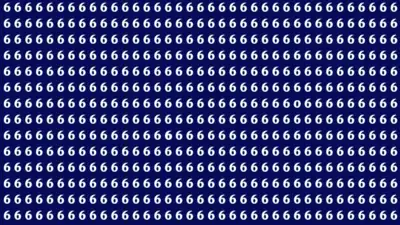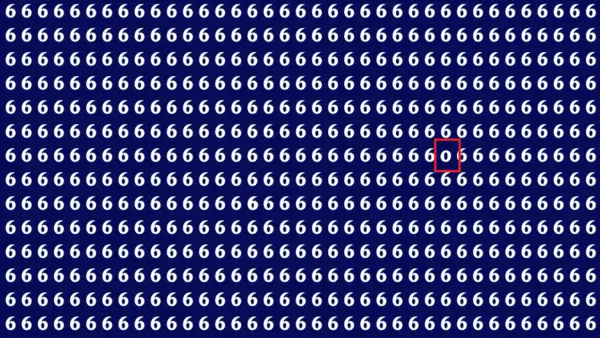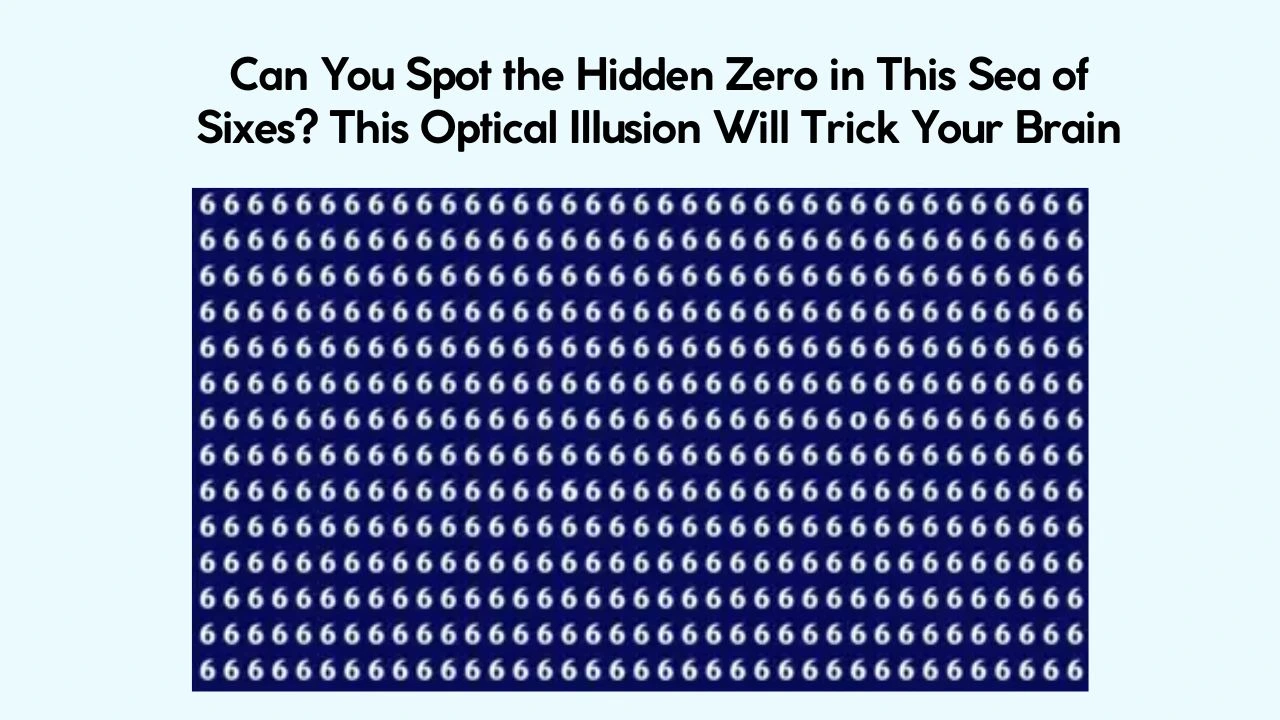Optical illusions have the ability to deceive our minds, causing us to doubt our vision of reality and question what we see. Finding a zero that has been expertly concealed within a sea of sixes is the goal of the newest mind-bending trick trending on social media. This activity may appear simple at first, but don’t be duped. A subtle kind of visual gaslighting, this illusion deceives your brain into perceiving uniformity when in fact there is a difference.
A Sea of Sixes is the setup.
Imagine a grid where the number six appears repeatedly, dozens or even hundreds of times. This pattern is immediately recognized by your brain, which then begins looking for irregularities. The trick is that the zero blends in with the sixes so perfectly that it hardly stands out. Why is that? Since the zero and the six have similar rounded curves and shapes, they are visually similar enough to be confusing to even the most perceptive eyes.
This task challenges the way our brains interpret visual data. An evolutionary advantage that enables us to make sense of the world in a matter of seconds is the speed at which our minds are designed to perceive patterns. However, this efficiency can occasionally backfire, particularly when an illusion takes advantage of those same shortcuts.
Why Is the Zero So Difficult to See?
The way our minds prioritize and filter information makes it hard to see the zero. In order to prevent sensory overload, your brain will often lump together many identical shapes into a single category and ignore minor variations.

The zero in this illusion is meticulously crafted to resemble the sixes in shape, but it is devoid of the tiny tail or “hook” that distinguishes the number six. However, your brain is so set up to anticipate sixes everywhere that it nearly overlooks this minor distinction, making the zero blend into the background visual clutter.
It can be a frustrating experience. You continue to scan, but the zero seems to be playing hide-and-seek. The illusion causes you to question your capacity to see properly or your attention to detail, which is precisely the gaslighting impact.
How to Develop Your Vision to Identify the Zero
There are ways to get over this illusion, so don’t worry. Slow down first. Zoom in or carefully focus on particular areas of the image rather than quickly scanning the entire thing. Take careful note of each number’s shape. The zero is a smooth, closed loop, whereas the six has a curving tail that extends from the bottom right.
Without the pattern’s context, try to picture how the numbers appear. Your brain can better isolate the zero by recalibrating itself by actively looking for the missing tail.
Examining the photograph from various angles is another piece of advice. Zooming in reveals details that are hidden from view from a distance, while occasionally taking a step back helps your brain identify abnormalities it missed up close.
What We Can Learn About Perception From This Illusion
In addition to being a fun task, this illusion offers intriguing insights into how people see things. It emphasizes how readily our senses may be tricked and how much our perceptions are influenced by our expectations. It serves as a reminder that patterns and past knowledge can affect how well our brains comprehend information.
This has significant ramifications for daily living. Knowing how perception functions—and occasionally fails—can improve decision-making and increase awareness of cognitive biases in a variety of contexts, including eyewitness testimony, design, and advertising.

Remember the zero hiding amid the sixes the next time you encounter a pattern that appears overly consistent. Such optical illusions are windows into the intricacies of human sight, not merely puzzles. Therefore, take your time, have faith in your eyes, and relish the excitement of recognizing what is expertly concealed in front of you.

